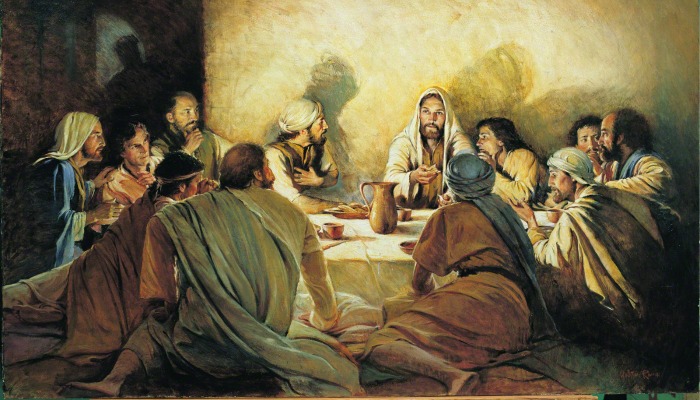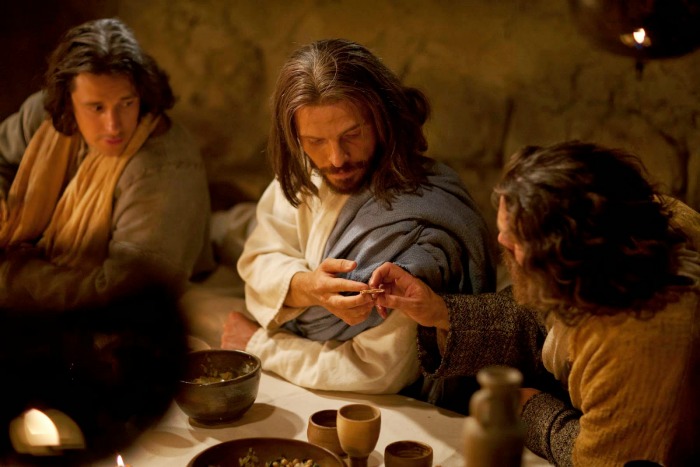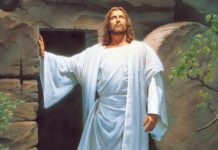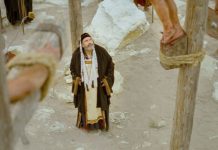
Passover begins the evening of April 11, 2017, but investigating the Passover is a wonderful way to focus your Easter season on Christ. Here is a Family Home Evening to help you do that.
A Passover Family Home Evening
Songs especially suitable for a Passover Family Home Evening are as follows:
Redeemer of Israel ………………………………………………………………….. #6
Israel, Israel, God is Calling ………………………………………………………. #7
Guide Us, O Thou Great Jehovah ……………………………………………. #83
I’m a Pilgrim, I’m a Stranger…………………………………………………… #121
Does the Journey Seem Long? ……………………………………………… #127
Ye Elders of Israel………………………………………………………………… #319
Singing activity:
Learn the song “Let My People Go. (You can print a copy from my book, Days of Awe, available as a free download from MormonHub.)
Preparation:
Purchase matzah crackers from the supermarket or from a kosher foods store accessed on the Internet. Purchase a small bottle of horseradish (not creamed). Have on hand some celery or parsley, a hard-boiled egg, a chicken bone or neck, a bowl of salt water, and some grape juice. These are symbolic foods used in the Passover.
Make a recipe of charoset. Or make charoset together as a family activity (see recipe below). Have a Bible on hand to read from Exodus and Luke and a Book of Mormon to read from. Gospel art pictures of Moses or the Exodus story can be used as visual aids.
Set the symbolic food items out on a table to display.
Lesson
Ask: Does anyone know the story of Moses and the “Exodus?”
Try to remember and shape the story without referring to the scriptures. Guide the discussion so that the following points are included:
- Jacob and his sons went to Egypt, because there was a famine in Canaan.
- The Egyptians welcomed Jacob’s family, because Joseph had found honor in the court of The Egyptians. Joseph gave them land and food.
- Jacob’s family grew and grew into a large population of people. Joseph died, and the later Pharaohs forgot what he had done to help Egypt. They were afraid that the descendants of Jacob (called the Israelites) would join with their enemies and fight against Egypt. They began to oppress the Israelites and made them slaves. The Israelites had to make bricks and do other hard labor. The Israelites prayed for deliverance.
- Moses had been raised in Pharaoh’s court, but he had to run away, because he killed an Egyptian taskmaster who was beating an Israelite. He had been gone from Egypt for many, many years. When he was about 80 years old, the Lord appeared to him in a burning bush and commanded him to go back to Egypt and talk to Pharaoh, to tell Pharaoh to let the Israelites go free.
- Moses went to His brother Aaron, who helped him. Pharaoh wouldn’t listen, so the Lord sent plagues on the Egyptians. The last plague killed all the first-born of Egypt, and Pharaoh finally let the Israelites go.
- The armies of Pharaoh followed the Israelites to kill them. The Lord parted the Red Sea, and the Israelites fled through it on dry ground. The Egyptian soldiers followed them, but they were swallowed up in the sea.
- The plagues and the parting of the Red Sea were great miracles. The Israelites want to remember them always, so they can remember how great the Lord is, and how he blesses and watches over us.

Ask: Was it difficult to remember the whole story? The Jews don’t want to ever forget the miracles of God, so they have a holiday to help them remember. The holiday comes once a year, and it is called Passover.
- At Passover the Jews have a big feast. At the feast, they tell the story of Moses and the Israelites.
- At the Passover feast, the Jews serve foods that represent parts of the story. The foods help them to remember:
- The bone represents the lamb they sacrificed the night before they left Egypt. The Lord commanded them to sacrifice the lamb as an offering.
- The charoset represents the mortar the Israelites used to make bricks for the Egyptians. It is sweet, because it also represents the sweetness of hope. Even when they were slaves, the Israelites had faith and hope.
- The egg represents a temple offering and new birth in the spring time. The Israelites left Egypt in the spring.
- The celery and parsley represent the green herbs that grow in spring. The Israelites were grateful for their crops and harvests.
- The horseradish is very bitter. Eating it brings tears to your eyes. It represents the bitterness of slavery and oppression.
- The salt water represents the tears of affliction that the Israelites shed while they were slaves.
- The matzah is really “unleavened ” bread. The Israelites left Egypt so fast that they didn’t have time to allow their bread to rise. It baked in the hot sun. Now, the unleavened bread also represents the manna that God gave the Israelites to eat in the wilderness.
- The “wine” (grape juice) is called “the fruit of the vine” It represents joy. Our joy comes from being saved.
Demonstrate that during the Passover feast, Jews dip the herbs in the salt water to eat, and they eat a piece of matzah with charoset and horseradish. They sip the wine to remember the covenants the Lord made with Israel. Let everyone try it.
Doing this helps Jews to remember the experiences of their ancient fathers. We need to remember the way the Lord can save us with miracles. Reciting the story of the Exodus helps us remember. Nephi did this when his brothers were losing their faith. Read 1 Nephi 17:23-29, 40, 42.
Explain:
Jesus went to Jerusalem with his family every Passover. They took offerings to the Temple (a lamb, just like at the time of the Exodus). Jesus was born in April, so the Passover season was also the time of His birthday.
When Jesus was just about to turn thirty-three years old, He went to Jerusalem. Instead of having the Passover feast with his family, He called his apostles together to have the feast with them (Luke 22:7-16).
This time, Jesus wanted His apostles to remember more than the deliverance from Egypt. He wanted His disciples to remember that He was the deliverer, and that He would deliver them from sin, the way He delivered their forefathers from slavery in Egypt.
 Jesus blessed the matzah (the unleavened bread) that represented manna from heaven. He passed it to His disciples and told them to eat it in remembrance of His body. Jesus is the “bread of life.” This bread became the sacrament bread. When we partake of the sacrament bread, we do it in remembrance of Christ.
Jesus blessed the matzah (the unleavened bread) that represented manna from heaven. He passed it to His disciples and told them to eat it in remembrance of His body. Jesus is the “bread of life.” This bread became the sacrament bread. When we partake of the sacrament bread, we do it in remembrance of Christ.
Then Jesus blessed the wine. This “cup of joy” would represent the blood He shed for the remission of sins. The remission of our sins brings us joy. So, the Passover symbols became the Sacrament symbols. Instead of having Passover once each year in order to remember, we take the Sacrament every week.
__________________
Recipe for Charoset (pronounce with a guttural “h” and accent the second syllable)
Peel and chop a few apples very fine
Soak a small handful of raisins in very hot water until plump, then drain. Mash slightly.
Chop a handful of walnuts finely.
Put these ingredients in a bowl, then stir in cinnamon to taste and a bit of fruit juice (usually grape juice) to bind together. Serve cold.
Gale’s book: Day’s of Awe: Jewish Holy Days, Symbols & Prophecies for Latter-day Saints is available in paperback at Amazon.com.





